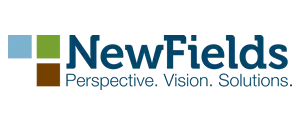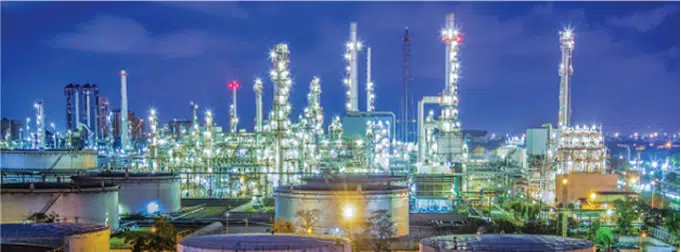>> Download a printable pdf of this datasheet
AIR: We can help you navigate the challenges of air quality services including: permitting, compliance, enforcement negotiations, and reporting.
ACOUSTICS: We provide site-specific acoustic monitoring and analysis that incorporates design recommendations to avoid or mitigate noise impacts to both human and ecological receptors.
NewFields offers the following air support services:
- Compliance Assessments
- Chemometrics
- Deposition and Transport
- Synthetic Minor Determinations
- Environmental Justice Recommendations
- RACT/BACT/LAER/MACT Assessments
- Emission Inventory Development
- Auditing
- Mathematical Dispersion Auditing
- Federal and Local Air Toxics Assessments
- PSD and Non-Attainment Review, Including Offset Analysis
We offer both in-air and underwater noise monitoring, modeling, and detailed analysis for a wide range of projects across all market sectors, including the following:
- Review of Applicable Noise Regulations
- Collection of Ambient Data (Baseline Sound Survey)
- Modeling Acoustic Levels
- Mapping Acoustic Contours
- Designing Mitigation Alternatives
- Short-term and Long-term Monitoring
How We Can Help
NewFields is known for customizing solutions to meet the unique challenges faced by our clients. We know that most projects do not fit neatly in a box. Below is a sample of services we provide for air and acoustics projects.
- Regulatory Review
It is often possible to reduce a facility’s permit conditions through an application for synthetic minor status or various other operating restrictions. NewFields is well versed in federal, state, and local air quality regulations and permitting requirements.
- Air Emission Inventory
We apply best engineering practices to determine emissions using process rates, control equipment efficiencies, site-specific emissions data, and emission factors. Air emission inventories are utilized to: determine regulatory applicability, evaluate potential compliance issues, and prepare data for the permit application.
- Air Dispersion Modeling
Air dispersion modeling often becomes part of an air quality analysis during the permitting process. NewFields has the training and expertise to develop and apply the necessary models to identify impacts to air quality and demonstrate compliance with the National Ambient Air Quality Standards (NAAQS).
- Control Technology Analysis
Our experts utilize the outcomes of the regulatory review process, air emissions inventory, and dispersion modeling to determine the most efficient and cost effective control technology. We prepare the analysis based on the required method, including:- Reasonably Available Control Technology (RACT)
- Best Available Control Technology (BACT)
- Lowest Achievable Emission Rate (LAER) and,
- Maximum Achievable Control Technology (MACT)
- Air Toxics Assessment
NewFields can identify air toxic emissions, perform emission calculations, and where appropriate, conduct air dispersion modeling for the regulated air toxic constituents, and conduct an evaluation of operating conditions for reducing emissions to demonstrate compliance. Furthermore, the appropriate control technology can be identified in those jurisdictions where control technology is part of the air toxics rules or is necessary to reduce emissions to demonstrate compliance.
- Acoustic Monitoring
We support all phases of project design by accurately characterizing existing ambient sound levels and conduct real-time acoustic monitoring near noise-sensitive receptor locations.
- Acoustic Modeling
Our team uses industry standard models to predict noise levels at discrete receptor locations caused by project construction and operations to determine compliance with noise regulations. Predicted sound levels are displayed in GIS with a 3D rendering of project sources and sound contours.
Case Study
CHALLENGE
A client wants to increase the amount of municipal solid waste that it can combust and to do so, the client must modify its existing air permit. It is an existing major stationary source holding a PSD permit.
THE APPROACH
Our team will meet with the client to fully understand the scope of the project. We then collect information and data about the relationship with regulatory agencies, community outreach efforts, history of permits, compliance levels, and more. Next we will file a Freedom of Information Act (FOIA) request. After collecting preliminary data for air permit modification including preparing emission inventory, identifying applicable air permitting rules, determining the types of emission control equipment needed, as well as developing air permit strategies to achieve client goals, the daily and annual burden on the client (e.g. costs, recordkeeping, stack tests, maintenance, etc.) and ways to alleviate community concerns, we meet with the client to review the data and determine the best strategy and timeline.
Implementation of the agreed upon strategy involves calculating emissions change as a result of expansion, conducting dispersion modeling, meeting with officials, applying technical and cost analyses and much more. Our team then stewards the client through the permitting process, public meetings, and finally, obtaining the air permit. As a post-permit follow up we make certain all procedures for recordkeeping and maintenance are in place and that the staff has been appropriately trained.
The NewFields Difference
NewFields experts maintain strong science skills that are uniquely combined with excellent visual and written communication skills. Our extensive experience in developing relationships with various federal and state regulatory agencies eases the permitting process for our clients. In addition, we have experience in the development of community outreach programs to garner local acceptance of the project. We have prepared a variety of air quality permits ranging from minor sources to Title V facilities, and performed noise surveys, modeling, and secured agency acceptance regarding noise compliance. Our team of professionals has evaluated projects to determine if they qualify for state specific programs, such as de minimis exemptions or general permits.
Let us help you with your next project and experience the NewFields difference!



 Facebook
Facebook Instagram
Instagram LinkedIn
LinkedIn Twitter
Twitter
